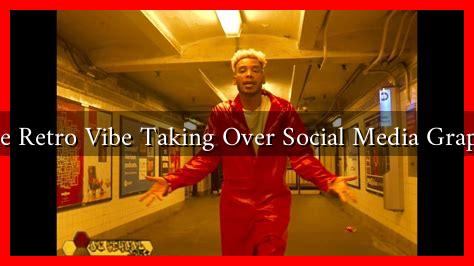-
Table of Contents
Is the Retro Vibe Taking Over Social Media Graphics?
In recent years, social media has become a canvas for creativity, with brands and individuals alike vying for attention in an increasingly crowded digital landscape. One of the most striking trends to emerge is the resurgence of retro aesthetics in social media graphics. From vintage color palettes to nostalgic typography, the retro vibe is not just a fleeting trend; it appears to be taking over social media graphics in a significant way. This article explores the reasons behind this phenomenon, its impact on branding, and what it means for the future of digital design.
The Allure of Nostalgia
Nostalgia is a powerful emotion that can evoke feelings of comfort and familiarity. In a world that is constantly changing, many people find solace in the past. This emotional connection is a key driver behind the popularity of retro graphics on social media. Here are some reasons why nostalgia resonates with audiences:
- Emotional Connection: Retro designs often remind people of their childhood or simpler times, creating a sense of warmth and belonging.
- Authenticity: In an age of digital perfection, retro graphics can convey a sense of authenticity and imperfection that resonates with audiences.
- Timelessness: Certain design elements from the past, such as bold colors and unique typography, have a timeless quality that continues to appeal to modern audiences.
Visual Trends in Retro Graphics
The retro aesthetic encompasses a wide range of styles, from the vibrant colors of the 80s to the muted tones of the 70s. Here are some key visual trends that are currently dominating social media graphics:
- Color Palettes: Bright, saturated colors reminiscent of retro video games and pop art are making a comeback. Brands like Ben & Jerry’s utilize these palettes to evoke a sense of fun and playfulness.
- Typography: Vintage fonts, such as serif typefaces and hand-drawn lettering, are increasingly popular. Companies like Old Navy have embraced these styles to create a nostalgic feel in their campaigns.
- Textures and Patterns: Grainy textures and retro patterns, such as polka dots and stripes, add depth and character to graphics, making them stand out in a sea of digital content.
Case Studies: Brands Embracing Retro Aesthetics
Several brands have successfully integrated retro graphics into their social media strategies, resulting in increased engagement and brand loyalty. Here are a few notable examples:
- Instagram’s Retro Filters: Instagram has introduced filters that mimic the look of vintage cameras, allowing users to create retro-inspired content easily. This feature has led to a surge in retro-themed posts, showcasing the platform’s adaptability to trends.
- Pepsi’s Throwback Campaign: Pepsi’s “Throwback” campaign, which featured retro packaging and advertising, resonated with consumers and resulted in a significant boost in sales. The campaign effectively tapped into nostalgia while promoting a modern product.
- Spotify’s Retro Playlists: Spotify has capitalized on the retro trend by curating playlists that feature music from past decades. This strategy not only appeals to older generations but also introduces younger audiences to classic hits.
The Future of Retro Graphics in Social Media
As the retro vibe continues to gain traction, it raises questions about the future of social media graphics. Will this trend persist, or is it merely a passing phase? Here are some predictions:
- Increased Personalization: As brands seek to connect with consumers on a deeper level, personalized retro graphics may become more prevalent, allowing users to engage with content that resonates with their individual experiences.
- Hybrid Styles: The fusion of retro and modern design elements is likely to become more common, creating unique visuals that appeal to a broader audience.
- Continued Emphasis on Authenticity: As consumers become more discerning, brands that embrace retro aesthetics may find success by prioritizing authenticity and storytelling in their graphics.
Conclusion
The retro vibe is undeniably taking over social media graphics, driven by nostalgia, emotional connection, and a desire for authenticity. As brands and individuals continue to explore this aesthetic, it is clear that retro graphics are more than just a trend; they represent a longing for connection in an ever-evolving digital landscape. By embracing the past while looking toward the future, social media graphics can create a unique space that resonates with audiences across generations.

